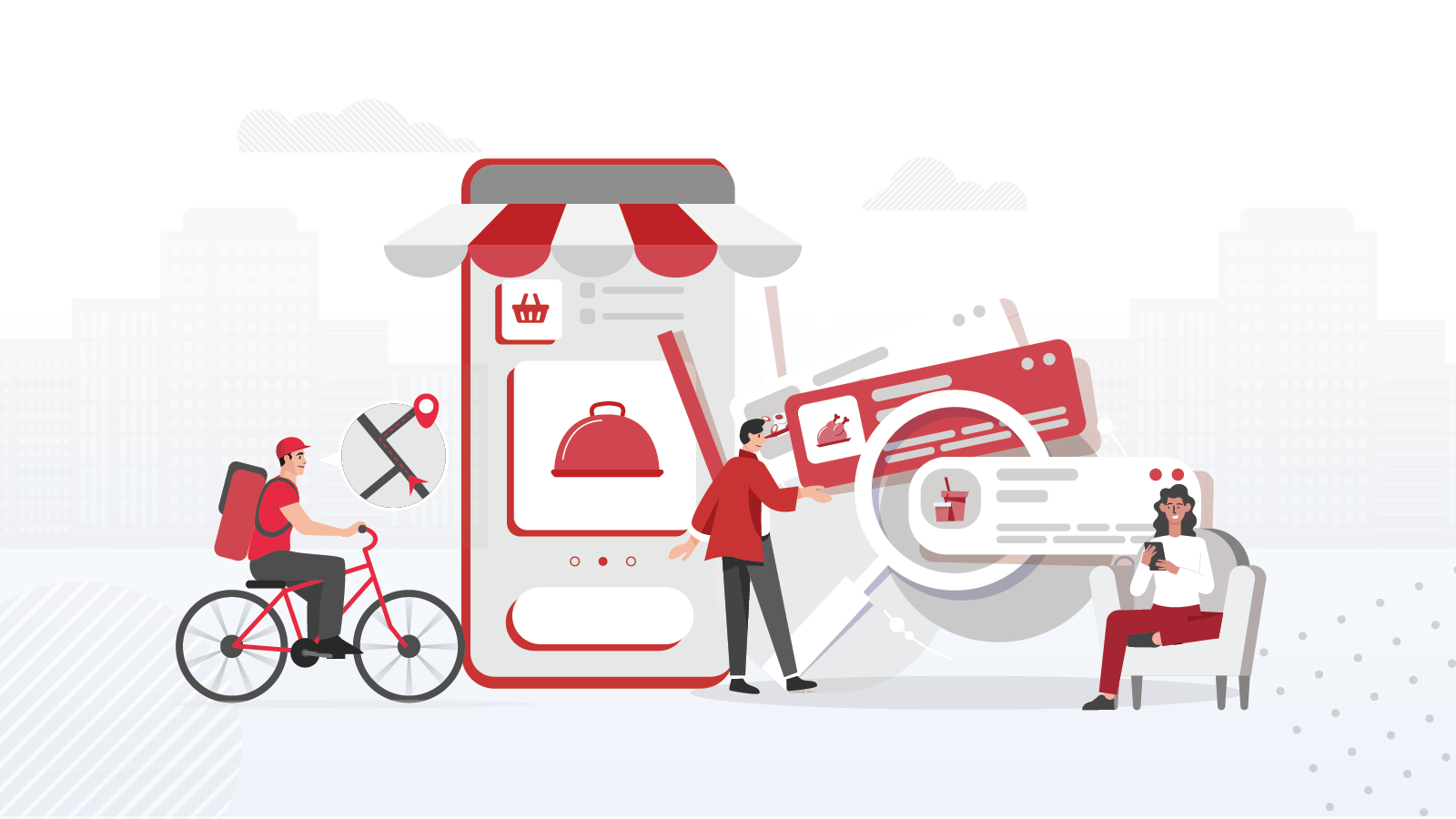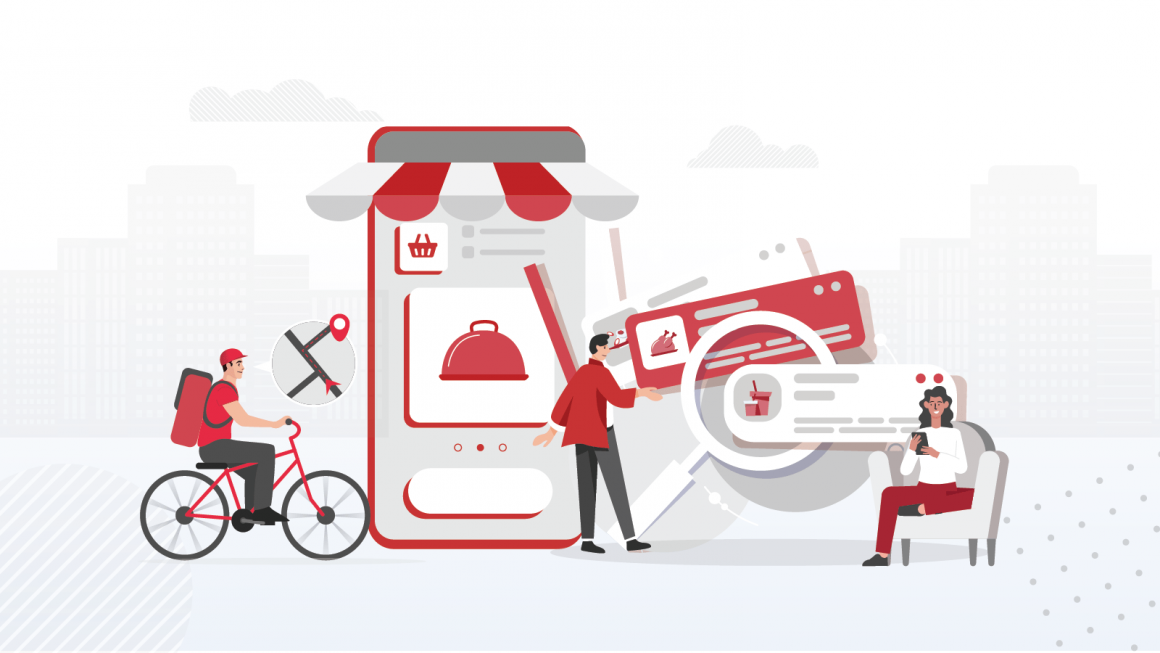
The food delivery market saw an incredible surge in growth during the COVID-19 pandemic. While the world settles back into regular routines, many restaurants, grocery stores, and merchants are interested to see where the market heads next.
The industry trends going forward will play a big role in prioritizing business goals for merchants operating within this sector. To prepare for tomorrow, savvy brands should keep their finger on the pulse of food delivery and pay attention to the following key trends.
#1: The Market Will Continue To Grow
Today, the food delivery market is worth more than $150 billion globally. This market segment has more than tripled in value since 2017, largely due to COVID-19. In the United States alone, the food delivery market more than doubled in value during the pandemic.
While COVID-19 undoubtedly pushed the food delivery market to new heights, the market was already growing at a steady rate of 8%.
Much of this growth is taking place in the restaurant segment of the food delivery market. Looking toward the future, Morgan Stanley predicts that roughly 40% of total restaurant sales will transfer to online delivery by 2020, the equivalent of $220 billion in restaurant revenue.
Interestingly, digging further into the data, 43% of consumers who opted for food delivery cited it as a replacement for a meal at a restaurant, which is up from 38% in 2016. This paints a picture in which delivery orders are actually taking the place of what would have previously been a dine-in meal.
As consumer demand for food delivery options continues to grow, merchants will need to ensure that they have a reliable system in place to fulfill these requests. Additionally, restaurants must think strategically about how they will keep up with the demand for delivery orders.
For further reading, check out our Tips for Creating a Streamlined Food Delivery Process.
#2: Businesses Are Pushing Back Against Delivery Fees
As the demand for food delivery has increased, many restaurants turned to third-party delivery apps to meet their immediate need. However, in a recent report by Restaurant Dive, third-party delivery fees were cited as a major concern for restaurants.
McKinsey & Company reflected this issue in its recent report on the evolution of ordering in, as well. According to this report, third-party delivery platforms have been making money through five revenue streams:
- Restaurant commission fees — generally the equivalent of around 15 to 30% of a meal price
- Customer delivery fees — approximately $2-5 per order
- Customer service fees — an additional 15% fee tacked onto the price of an order
- In-app advertising — ongoing costs passed on to restaurants in order to remain visible on the third-party platform
- Tips — some of which go directly to drivers but all of which help subside the costs of delivery for the third-party platform
It is easy to see how these fees and high costs can eat away at a restaurant’s profits. Looking forward, many restaurants are interested in developing their own delivery programs or tapping into up-and-coming networks that do away with commissions and fees.
To learn more about delivery options that do not require exorbitant commission costs, check out Ally Now.
#3: More Companies Are Investing in Customer Data
As delivery becomes critical to the success of restaurants, grocery stores, and other food-related industries, many companies are turning an eye to big data. During the pandemic, many of these merchants relied on third-party apps that withheld important customer data from the merchants. Without insight into customer behavior, merchants were forced to guess what tactics were affording them success and which were leading to unhappy customers.
A recent example of how businesses are prioritizing customer data is showcased in McDonald’s acquisition of Dynamic Yield at over $300 million. Using algorithmic machine learning, McDonald’s will now be able to understand exactly how their customers interact with their menu. This will allow McDonald’s to adjust proposed purchases — both in-person or via delivery — in real-time based on customer preferences.
This is just one example of how companies are beginning to see the critical importance of owning their customer data.
For further reading, check out Using Metrics to Increase Customer Satisfaction with Delivery Orders.
#4: Automation Is Taking Center Stage
As the demand for efficient delivery continues to grow, many merchants are turning to automated robot delivery systems. What was once a niche market is rapidly growing as the technology powering automated delivery robots improves. Now, based on a comprehensive research report by Market Research Future (MRFR), the market size of automated delivery robots is projected to reach USD 971.3 million by 2030 at a compound annual growth rate (CAGR) of 31.3%.
Automation is becoming integral to delivery for a few key reasons:
- Delivery robots operate at a lower cost to merchants, which allows companies to earn higher profits on delivery orders.
- Automated robots can optimize routes even in congested areas. In urban regions, this is critical as delivery drivers battle clogged freeways and back-to-back traffic in downtown areas.
- Robots can run off of 100% renewable energy, making them a more environmentally conscientious choice. As consumers place a higher demand on the sustainability efforts of merchants, this will become a powerful differentiator.
To learn more about the future of automated delivery robots, check out how Ally Developed an Autonomous Vehicle For Deliveries.
#5: Full Integration Is Critical
Historically, restaurants and merchants have been plagued by the lack of integration between third-party delivery apps and their own POS systems. This has resulted in highly inefficient systems and the potential for a large amount of human error.
The industry is now trending toward full integration between delivery orders and in-house POS systems. Merchants are increasingly interested in a single platform solution that seamlessly speaks to all existing systems. This will result in a more efficient end-to-end ordering workflow.
To learn more about the future of full integration, check out End to End Ordering – Online Shopping & Ordering Solutions by Ally.
#6: Delivery Is Leading To Higher Checks
Finally, a key trend in food delivery for restaurants is the fact that delivery orders are actually resulting in higher check amounts. According to recent data released by Wendy’s, the fast-food giant’s average check sizes have been 1.5 to 2 times higher on delivery orders. Not only that, but the company reported that customers who order delivery tend to become repeat business and indicate the strongest customer service scores.
This increase in check size could lead to higher annual revenues for restaurants that can figure out a cost-effective way of handling delivery services.
To learn more about how merchants can provide delivery without paying a cent in commissions, check out Ally’s full suite of enterprise-grade software.

